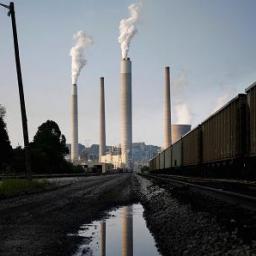Natural gas surpasses coal as top source of electricity in US
 For the first time ever, natural gas trumped coal as the top source of electric power generation in the U.S. In April, roughly 31 percent of electric power generation came from natural gas, whereas coal accounted for 30 percent. It's a dramatic difference from April 2010, when coal accounted for 44 percent of the mix and natural gas just 22 percent. In last 18 months, 17 gigawatt hours of coal-fired capacity has been retired completely, much of it already replaced by gas generation. "It could be the beginning of the end for the current fleet of coal plants."
For the first time ever, natural gas trumped coal as the top source of electric power generation in the U.S. In April, roughly 31 percent of electric power generation came from natural gas, whereas coal accounted for 30 percent. It's a dramatic difference from April 2010, when coal accounted for 44 percent of the mix and natural gas just 22 percent. In last 18 months, 17 gigawatt hours of coal-fired capacity has been retired completely, much of it already replaced by gas generation. "It could be the beginning of the end for the current fleet of coal plants."As domestic demand at power plants has been falling, global demand for U.S. coal exports also continues to sag. On Monday Chinese customs data showed coal imports in China plunged 33.7 percent in June versus a year earlier. China is the largest consumer of the commodity in the world. U.S. coal exports have been in free fall for years as countries like Australia and Indonesia have provided supply to China more inexpensively. The stronger dollar is also making American supply pricier abroad.
Coal prices have continued to crater. This is particularly true of coal mined in the eastern U.S. Since their 2011 peak, prices have nearly halved. But the ripple effects extend beyond coal stocks. Coal, a historically high-margin business for railroads, accounted for nearly 19 percent of revenue for the Class I railroads in the U.S. in 2014. Of the 1.8 billion tons of freight transported via rail in 2014, 39 percent was coal.
Methane (natural gas) is much easier to store than the raw hydrogen produced from electrolysis.